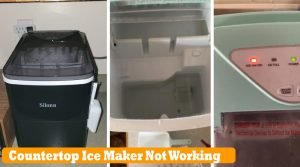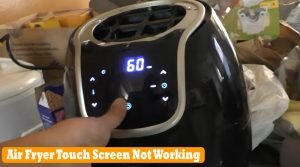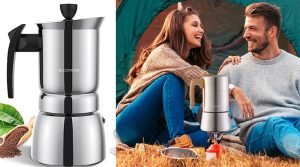Moka Pot Not Working: Troubleshooting Guide
Encountering issues with a Moka pot not working can be a disheartening experience for any coffee enthusiast. Despite its reputation for simplicity and reliability, this beloved stovetop coffee maker may occasionally fail to deliver the perfect brew due to various reasons such as clogged filters, improper sealing, or insufficient heat distribution. When faced with such challenges, understanding the potential causes and troubleshooting methods becomes essential to restoring the Moka pot’s functionality and reclaiming the joy of brewing that perfect cup of coffee.
Common Issues with Moka Pot Not Working
Before diving into the solutions, let’s identify the common hiccups you may face with your Moka pot.
Stove Heat Issues: One of the most common issues users encounter with a Moka pot is inconsistent brewing due to inadequate or excessive heat. This can result in under-extracted or over-extracted coffee, affecting its taste and quality.
Water Leakage: Another frequent problem is water leakage during the brewing process. This can occur due to damaged seals or improper assembly of the Moka pot components.
Coffee Grounds Too Fine:
Weak Coffee:
No Pressure Buildup:
Coffee Taste Bitter:
Following troubleshooting tips and maintaining Moka pot regularly, you can resolve common issues and enjoy delicious coffee brewed to perfection every time.
Troubleshooting Steps for Moka Pot Not Working
To address these issues and get Moka pot working optimally, follow these troubleshooting steps:
1. Grind Size and Coffee Quantity
Coffee grind size for a Moka pot is crucial. Too fine, and you’ll struggle with pressure and potentially get a bitter brew. Too coarse, and you’ll end up with weak coffee.
Solution: Ensure you’re using a medium-fine grind like table salt. Also, be precise with your coffee-to-water ratio.
2. Water Temperature
Cold water will prolong the brewing time, likely resulting in over-extraction and a bitter taste.
Solution: Use hot (but not boiling) water when filling the base to speed up the brewing process and maintain the flavor profile.
3. Seal and Filter Check
The rubber seal and metal filter basket must be in good condition to maintain pressure.
Solution: Inspect for cracks or tears in the seal and ensure the funnel and filter are clean and free from coffee residue.
4. Modifying Coffee Grounds
Adjusting the grind size can make a significant difference when faced with problems like clogged filters or bitter-tasting coffee.
Solution: If your coffee tastes bitter or the grounds are clogging the filter, use coarser grounds to prevent over-extraction and improve water flow.
5. Removing Coffee Stains
coffee residue can build up on the pot’s surfaces, resulting in unsightly stains.
Solution: To remove stubborn coffee stains, soak the Moka pot components in equal parts water and vinegar for a few hours before rinsing thoroughly.
6. Heat Source and Brewing Time
The Moka pot works effectively on the right amount of heat and brewing duration.
Solution: Use a moderate heat setting, and the coffee should start emerging from the spout within about 5 minutes. If it takes longer, your heat source may need to be improved.
7. Cleaning and Maintenance
Regular maintenance is critical to a well-functioning Moka pot. Residue buildup can ruin the seal and impede pressure.
Solution: Disassemble and clean all parts with warm water after every use. A vinegar solution that runs through it occasionally can help with mineral deposits.
Following these steps and tips, you can often revive a Moka pot that needs to be fixed at its best. Remember, the journey to the perfect cup of coffee is a continuous process of learning and refinement, and the Moka pot provides the ideal canvas for your expertise to shine through.
Additional Tips and Tricks Moka Pot Not Working
Using a Pre-Heated Moka Pot: Warming up the Moka pot before brewing can help stabilize the extraction and reduce the coffee’s burning chance.
Using Filtered Water: Minerals in water can affect the taste and create deposits inside the pot that affect pressure and taste.
Experimenting with Different Coffee Beans: Different beans and roasts will react uniquely to the Moka pot’s brewing process, so don’t be afraid to experiment.
Reasons of Moka Pot Isn’t Brewing Perfect Coffee
For the coffee aficionado, there’s something deeply ritualistic about brewing the perfect cup of joe. Enter the Moka pot, an iconic stovetop fixture revered for its ability to produce a rich, complex, and traditional espresso-like coffee. But what happens when your Moka pot starts not to brew? Fear not, fellow home barista, this guide dives into the five most common reasons why your beloved Moka might be acting up and the steps to remedy the situation.
Coffee Grinders Grind on Pot Performance
The first culprit to consider is one often overlooked — the grind of your coffee. Moka pots prefer a fine grind, which is not as refined as espresso but not as coarse as you’d use for a French press.
why does this matter?
The right grind ensures water passes through the coffee optimally, extracting the flavors without brewing. When the grind is too fine, it can result in clogs, while a coarse grind yields a weak, underwhelming brew.
Follow these steps:
- Understand Moka’s sweet spot by experimenting with different grind sizes.
- Aim for consistency like that of table salt.
Is the pot overfilled or underfilled?
Water-to-coffee grounds ratio is the unsung hero of the coffee making process. Overfill Moka pot with water, and you’re looking at a bitter brew. Under fill and prepare for frustration (likely a cup of coffee that tastes like dirty water). Respect the ratio typically between 1:13 and 1:20, depending on your taste preferences and balance will be restored!
How to Nail It:
- Measure your water and coffee accurately to your desired ratio.
- Level out the coffee in the filter; it shouldn’t be packed.
Too Much Heat and Too Little Heat: The Tango of Temperatures
The Moka pot brewing style relies heavily on pressure from steam to push water through the coffee grounds. In the absence of precision, you can’t brew alchemy with a perfect bond. Too high, and you will over-extract, leading to bitterness; too low, and your coffee will be weak and acidic.
Finding the Right Heat:
- Use a medium to medium-low heat to balance intensity.
- The flame should not be wider than the pot’s base when using a gas stove.
Unseen Enemy: Neglected Maintenance
You might remember to clean the apparent parts of your Moka pot.
What about the unseen?
Old coffee oils and tiny coffee grounds that find their way into the seals and filters can hinder brewing. Regular maintenance will keep your Moka pot brewing at its best.
Maintenance Matters:
- Clean the pot after every use.
- Disassemble and clean each part separately; inspect the filters and seals for damage.
Leaky Gasket
This oft-forgotten little ring is crucial in creating the seal that allows the pressure to build up. If there’s a leak, Moka pot won’t build pressure correctly.
Sealing the Deal:
- Check the gasket for visible damage, like tears or brittleness.
- Replace the gasket if it’s not forming a tight seal.
Moka pot creates a distinctive coffee experience – when it works correctly. By homing in on these potential issues and vigilantly maintaining your Moka, you can ensure that each cup brewed celebrates the art of coffee making.
Final Verdict
If moka pot not working, you need to remember that most problems have simple solutions. By following the troubleshooting steps, you can address common issues like water leakage, bitter-tasting coffee. Remember to inspect seals, adjust heat settings, and modify coffee grounds as needed to ensure optimal performance. Regular cleaning and maintenance can prevent many problems in the future. By taking proactive steps to address any issues with your Moka pot not working, you’ll be able to enjoy delicious, freshly brewed coffee easily.
FAQs of Moka Pot Not Working
Q: Why is my Moka pot not brewing properly?
A: The moka pot may need to be brewing correctly due to inadequate stove heat, damaged seals, or clogged filters. Refer to the troubleshooting guide for solutions.
Q: How do I know if my Moka pot seal needs replacing?
A: If you notice water leakage during the brewing process or if the seal appears worn or damaged, it’s time to replace it with a new one.
Q: Can I use any type of coffee grind in a Moka pot?
A: While you can experiment with different grind sizes, using a medium-coarse grind is recommended to prevent clogging and ensure proper extraction.
Q: Why does my Moka pot coffee taste bitter?
A: Bitter-tasting coffee from a Moka pot can be attributed to over-extraction caused by using too fine coffee grounds or excessive heat. Adjusting these factors can help improve the taste.
Q: How often should I clean my Moka pot?
A: It’s advisable to clean your Moka pot after each use to prevent the buildup of coffee residue and maintain its performance.






